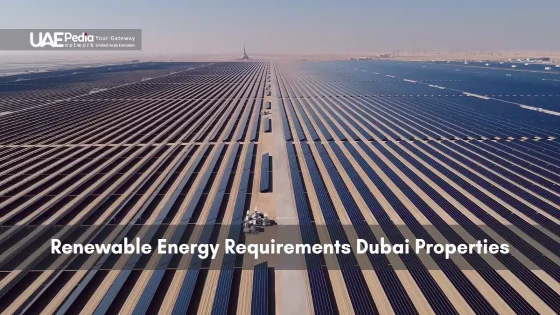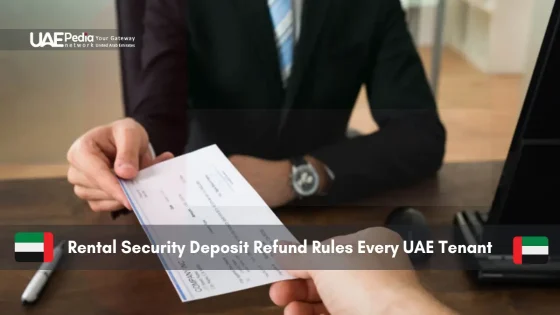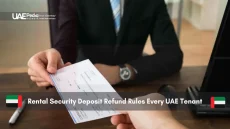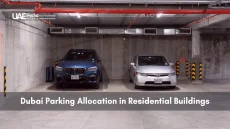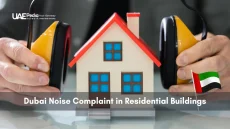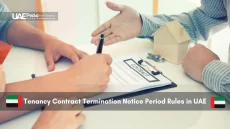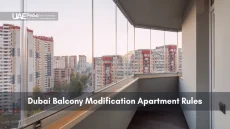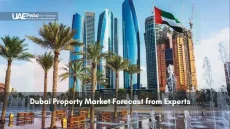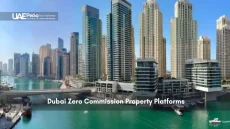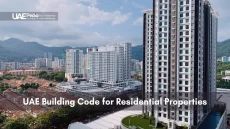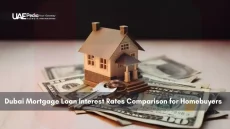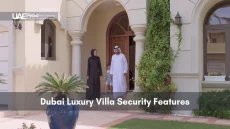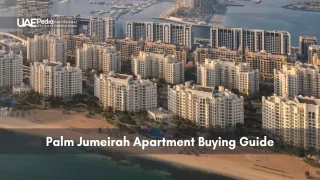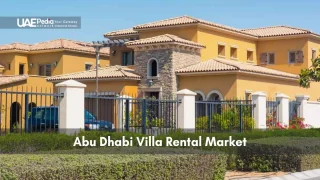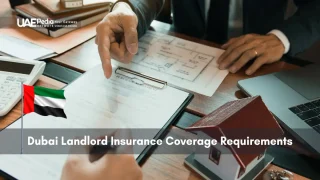Did you know Dubai’s desert sands now fuel one of the world’s largest solar parks? The Mohammed bin Rashid Al Maktoum Solar Park generates enough clean power for over 1.3 million homes—a number growing faster than a summer sandstorm. This isn’t just tech wizardry; it’s part of a bold vision reshaping how the city builds its future and Must Meet Today.
New developments here aren’t just sleek glass towers anymore. They’re designed to meet strict eco-friendly regulations that blend innovation with responsibility. From rooftop solar panels to smart water systems, these standards reflect a nationwide push toward sustainability anchored in Renewable Energy Projects UAE by the UAE’s Energy Strategy 2050.
What makes this shift unique? It’s driven equally by government blueprints and private ambition. Developers compete to earn sustainability certifications, while landlords retrofit older buildings with energy-saving tech. Even community markets now prioritize locally sourced materials—proof that green living isn’t a trend here, but a lifestyle.
Specialized regulations now require new Dubai properties to integrate rooftop solar, smart metering and water-efficient systems under the UAE Energy Strategy 2050. Developments such as the Mohammed bin Rashid Al Maktoum Solar Park—currently powering over 1.3 million homes—illustrate the scale of on-site generation targets rising from 12 percent today to 75 percent by 2050. Mandatory retrofit programs and tax incentives for green certifications ensure existing and new buildings meet defined carbon-reduction benchmarks.
Public agencies and private developers collaborate through initiatives like Shams Dubai and green building codes mandating 40 percent power-use reductions in commercial spaces by 2030. Performance is tracked via 1.2 million smart meters, while federal grants cover up to 45 percent of retrofit costs. By 2031, construction emissions must fall by 50 percent and 70 percent of the grid must derive from renewables by 2040, solidifying Dubai’s technical roadmap for a net-zero skyline.
Here’s what you’ll discover:
- How solar initiatives and smart design shape modern construction
- The role of public-private partnerships in cutting carbon footprints
- Updates on milestones like the 5,000-megawatt solar park expansion
Ready to see how Dubai’s skyline is rewriting its story? Let’s explore—*shukran* style.
The Future of Renewable Energy in Dubai
Imagine a city where skyscrapers don’t just touch the clouds—they harness them. Dubai’s blueprint for tomorrow isn’t scribbled on paper; it’s etched into every sun-facing window and wind-responsive facade. The emirate’s leaders aren’t waiting for change—they’re building it, one megawatt at a time.
Sunrise Over Silicon Sands
By 2050, three-quarters of the city’s power could flow from carbon-neutral sources. How? The Dubai Clean Energy Strategy acts like a compass, guiding builders to blend solar tech with smart design. Think rooftops doubling as power stations and neighborhoods trading excess electricity like baseball cards.
Partnerships That Spark Progress
Government mandates set the stage, but private firms steal the spotlight. Developers now compete to install cutting-edge systems—from AI-driven cooling to recycled concrete.
“Every new tower must earn its place in the skyline,”
says a local planner. Certification programs reward eco-innovation, turning compliance into a badge of honor.
- Solar farms expanding faster than metro lines
- Tax breaks for retrofitting older buildings
- Community grids sharing surplus power
This isn’t just about megawatts. It’s a cultural shift—where desert traditions meet tomorrow’s tech, and every resident becomes a stakeholder in cleaner air. The future’s bright… and it’s powered by more than ambition.
Read More:
Understanding Dubai’s Energy Strategy 2050
What if every building permit held secret codes for cleaner air? That’s essentially how the UAE’s master plan operates—a detailed roadmap blending rules with rewards. Let’s unpack the playbook shaping smarter infrastructure.
Policy Foundations and Regulatory Framework
Think of Strategy 2050 as a triple-layer cake. The base: strict efficiency standards for new constructions. Middle tier: retrofitting incentives for older towers. Icing: tax breaks for cutting-edge tech adopters. Recent updates mandate 40% reductions in power use for commercial spaces by 2030.
| Component | Current Status | 2050 Target |
|---|---|---|
| Solar Integration | 12% of total capacity | 75% |
| Building Retrofits | 30% completed | 100% |
| Efficiency Standards | Mandatory for new builds | AI-optimized systems |
Targets for Clean Energy Adoption
“We’re not just flipping switches—we’re rewiring mindsets,” notes a Dubai Municipality report. Key numbers tell the story:
- 50% carbon cut in construction by 2031
- 70% green power share in the grid by 2040
- 100% eco-friendly government projects by 2026
This isn’t paperwork gathering dust. Smart meters now track real-time usage, while neighborhoods compete in monthly conservation challenges. The result? A living lab where policy sparks action—*shukran* to those who dare to build differently.
Innovative Solar Projects Transforming Dubai’s Skyline
Picture a desert canvas transformed into a shimmering sea of glass and steel. Mohammed bin Rashid Al Maktoum, Solar Park isn’t just generating power—it’s rewriting the rules of urban design. Phase by phase, this titan of tech proves sunlight can fuel both homes and imaginations.
Milestones That Light the Way
Phase II made headlines with tariffs at 5.6 cents per kWh—a global record at the time. Fast-forward to Phase VI, where capacity will hit 5,000 megawatts by 2030. That’s enough to power 1.6 million apartments with spare electrons for midnight cricket matches.
But the real magic? How solar panels here team up with molten salt storage. By day, they soak up rays. After sunset, stored heat keeps turbines spinning. “It’s like bottling sunshine,” laughs a site engineer. This combo slashes carbon output by 6.5 million tons yearly—equal to taking 1.4 million cars off highways.
- Phase IV’s 950MW tower: World’s tallest CSP structure
- Floating solar farms testing in Hatta’s reservoirs
- AI-powered mirrors adjusting angles by the millisecond
From desert highways to marina rooftops, bin Rashid Maktoum’s vision reshapes skylines. Even historic districts now sport sleek photovoltaic facades. The future’s not just bright—it’s dazzling.
Exploring Renewable Energy Sources in Dubai Properties
Ever seen a skyscraper double as a vertical power plant? Across the city’s newest districts, architects blend form with function—turning sun-drenched facades into silent generators. Solar panels now stretch across parking shades and pool decks, feeding juice to entire communities.
Take the Al Marmoom Solar Park—its mirrored arrays power 50,000 homes while cooling nearby buildings. But innovation doesn’t stop there. Developers experiment with rooftop wind turbines shaped like palm trees, catching desert breezes without spoiling views.
| Technology | Current Use | Potential |
|---|---|---|
| Photovoltaic Glass | 25% of new towers | 50% by 2030 |
| Waste-to-Energy | 2 processing plants | 15% grid share |
| Hydrogen Fuel Cells | Pilot projects | Backup systems |
“Diversification protects against sandstorms and price swings,” notes a green tech advisor. While sunlight dominates, projects like Warsan Waste Facility show trash-to-treasure potential—converting 1.9 million tons of waste yearly into electricity.
For builders, mixing sources isn’t just eco-smart—it’s strategic. Hybrid systems meet stricter codes while cutting long-term costs. Think solar-charged batteries powering night irrigation, or geothermal pumps cooling lobbies. Compliance becomes creativity here.
Emerging solutions reshape possibilities. Floating solar islands near Palm Jumeirah? Check. Microbial fuel cells in sewage lines? Under testing. Each experiment brings the city closer to balanced, resilient grids—one clever idea at a time.
Role of Government and Regulatory Bodies in Clean Energy
Who steers the ship of sustainability in a land where ambition meets dunes? It’s a dance between national frameworks and local action—think of it as a relay race where federal blueprints pass batons to emirate-level innovators.
Two Tiers, One Mission
Federal bodies set broad targets, like the UAE’s 2050 net-zero pledge. But Dubai’s authorities turn those goals into steel-and-glass reality. Take DEWA—the Dubai Electricity and Water Authority. They’ve connected 1,800+ buildings to solar grids since 2022, cutting peak loads by 23% in some districts.
| Responsibility Level | Key Entities | Focus Areas |
|---|---|---|
| Federal | Ministry of Climate Change | National emissions targets |
| Emirate | Dubai SCE, RSB | Building codes, retrofits |
Dubai’s Supreme Council of Energy (SCE) acts as the matchmaker between policy and practice. Their Green Building Regulations now mandate solar-ready designs for 70% of new constructions by 2030. Meanwhile, the Regulatory & Supervisory Bureau (RSB) tracks progress through smart meters—1.2 million installed citywide last year.
Collaboration sparks real change. When DEWA streamlined solar permit approvals in 2023, RSB fast-tracked 400+ projects. “We’re not just rule-makers—we’re enablers,” shares a SCE spokesperson. This teamwork slashed permit wait times from 30 days to 72 hours for rooftop installations.
- Federal incentives: Tax breaks for carbon-neutral designs
- Local action: DEWA’s Shams Dubai initiative for solar integration
- Shared vision: 50% emission cuts in construction by 2031
From skyscraper approvals to neighborhood retrofits, this layered approach turns desert dreams into livable futures. The secret sauce? Aligning big-picture vision with street-level ingenuity.
Economic Benefits Driving Sustainable Dubai Real Estate
What if going green could fatten your wallet while saving the planet? That’s the equation reshaping the city’s skyline. Smart money’s getting greener here—literally. Buildings with eco-smart designs now command up to 15% higher resale values than conventional towers, according to 2024 market data.
| Factor | Traditional Buildings | Sustainable Developments |
|---|---|---|
| Utility Costs | 100% baseline | 25% lower |
| Maintenance Expenses | Annual 5% increase | 18% reduction |
| Resale Value Premium | 0% | 12-15% |
Developers chasing certifications like LEED or BREEAM aren’t just polishing their halo. They’re unlocking serious perks:
- Tax breaks up to 20% for carbon-neutral projects
- Reduced municipality fees for water-saving designs
- Priority permits for solar-ready structures
Take the sustainable real estate boom at Dubai Sustainable City. Its solar-powered villas and car-free zones slash living costs by 30%—while fetching 20% premiums on resales. “Eco-innovation isn’t just feel-good here—it’s profit-first,” shares a resident investor.
Market analysts predict a 200% jump in green property transactions by 2027. Why? Tenants flock to lower bills, while investors chase stable returns. It’s a win-win scenario where smart development meets smarter wallets.
Technological Innovations: Smart Cities and Energy Efficiency
Your phone just pinged—it’s your AC adjusting itself before you step into the lobby. Welcome to tomorrow’s living, where buildings think faster than you do. Across the city, smart tech isn’t just convenient—it’s rewriting the rules of modern comfort.
Homes That Learn Your Habits
Imagine lights dimming as sunset paints the sky, or blinds tilting to block midday glare automatically. These aren’t sci-fi scenes—they’re standard in communities like Dubai Silicon Oasis. Developers now embed AI-driven systems that track patterns:
- Thermostats predicting occupancy to slash cooling costs
- Water sensors detecting leaks within seconds
- App-controlled appliances reducing standby power drain
One resident shares: “My utility bills dropped 30% after the retrofit—the house literally pays attention.”
Value Beyond Voltage
Smart features do more than save dirhams. A 2024 study revealed buildings with integrated tech attract tenants 40% faster. Why? Millennial renters prioritize app-controlled living, while families crave security features like smart locks.
| Feature | Cost Savings | Value Boost |
|---|---|---|
| Automated Lighting | 18% annually | 7% resale increase |
| Smart Irrigation | 22% water reduction | 5% rental premium |
| Energy Monitoring | 15% usage drop | 9% faster leases |
Take the Pulse Towers in Business Bay—their neural network managing elevators and parking cut energy consumption by 27% last year. Now units there lease before hitting listings. As one broker notes:
“Tech-savvy spaces don’t just sell—they magnetize.”
From voice-activated concierges to solar-charged robot cleaners, these systems prove efficiency and luxury aren’t rivals. They’re partners crafting smarter tomorrows—one algorithm at a time.
Steps to Achieve Net Zero 2050 in Dubai
What if your morning coffee powered the city? That’s the scale of transformation happening here. The path to cleaner infrastructure isn’t a sprint—it’s a relay race where every stakeholder carries the baton.
From Megawatts to Micro-Changes
First step: sunsetting gas-guzzling systems. Over 200 high-rises have swapped diesel generators for solar-charged batteries since 2023. Next phase? Retrofitting 15,000 older units with AI-driven cooling by 2027. “We’re rewiring the city’s DNA,” says a DEWA project lead.
Key moves accelerating the shift:
- Phasing out fossil fuel subsidies by 2030
- Mandating solar-ready designs for 90% of new builds
- Launching neighborhood energy-sharing networks
The UAE’s 2050 blueprint acts as a compass. Carbon trading markets now let towers offset emissions by funding wind farms. Early adopters save 18% on utilities—proving green choices fatten wallets too.
| Milestone | Deadline | Impact |
|---|---|---|
| 50% clean grid | 2030 | 1.2M tons CO2 reduction |
| Zero-gas construction | 2040 | 100% emission-free sites |
| Full net zero | 2050 | Carbon-neutral skyline |
Developers chasing certifications see permits fast-tracked. Communities benefit from cleaner air—hospital visits for respiratory issues dropped 9% in solar-heavy districts last year. The finish line? A city where every watt tells a story of smarter living.
How Residential and Commercial Properties Adapt to Green Building Practices
What if your neighborhood powered itself while you slept? Welcome to Dubai Sustainable City—a living lab where homes and businesses operate like synchronized swimmers in an efficiency ballet. This community doesn’t just meet standards—it writes them.
Blueprints Come Alive
Since 2015, this 46-hectare marvel has redefined urban living. Its 500 villas and 89 apartment buildings generate 60% of their own power through rooftop solar arrays. Car-free zones and shaded walkways slash cooling needs by 40%, while recycled water nurtures urban farms.
| Feature | Residential Impact | Commercial Benefit |
|---|---|---|
| Solar Canopies | 70% lower bills | 24/7 EV charging |
| Greywater Systems | 55% water savings | Landscaping costs cut |
| LEED Platinum Cert | 12% value premium | Faster tenant leases |
A resident shares:
“Our air tastes cleaner—kids play outside even at noon.”
Health metrics back this up—asthma cases here run 30% below city averages.
Businesses thrive too. The community’s construction trends inspired a shopping plaza with kinetic floor tiles. Steps from shoppers now light storefronts—a 15% energy boost for retailers.
- Biophilic office designs increasing worker productivity by 18%
- Shared composting hubs diverting 8 tons of waste monthly
- Smart meters triggering 22% behavioral conservation
Developers take notes. New projects now replicate these eco-smart strategies—proving sustainable spaces aren’t just ethical. They’re economically irresistible.
Energy Consumption Patterns and Carbon Emissions Reduction
What if your AC could fight climate change while you sleep? Buildings here now use 18% less power than five years ago—even as the population grows. Smart meters and AI-driven cooling cut waste without sacrificing comfort. “We’re proving luxury and responsibility can coexist,” shares a sustainability engineer at a recent urban tech summit.
Three shifts drive progress:
- Real-time dashboards tracking usage across 85% of commercial towers
- Building codes requiring 30% efficiency boosts in new constructions
- Community challenges rewarding districts that slash monthly consumption
| Metric | 2019 | 2024 |
|---|---|---|
| Avg. Emissions per Tower (tons/year) | 1,200 | 876 |
| Peak Demand Reduction | — | 14% |
| Health Issues Linked to Air Quality | 23% | 17% |
Tech plays traffic cop for electrons. Systems now adjust lighting and cooling based on occupancy sensors—saving enough yearly to power 12,000 homes. One hotel chain reported 22% lower bills after installing adaptive thermostats.
The payoff? Cleaner breezes and quieter streets. Asthma cases near efficiency-upgraded towers dropped 9% last year. As one resident notes:
“My balcony plants thrive now—proof the air’s changing.”
From smart glass to solar-chilled pools, every cooled room becomes a step toward cleaner horizons. The math is simple: less waste today means healthier tomorrows.
Urban Green Spaces and Water Conservation in New Developments
Picture stepping onto your balcony to birdsong instead of traffic hum—that’s the new rhythm of life in communities where concrete meets greenery. These lush pockets aren’t just pretty postcards; they’re life support systems cooling streets and scrubbing air. One study shows shaded walkways lower ambient temps by 9°F, turning blistering afternoons into bearable breezes.
Rooted in Innovation
At Dubai Sustainable City, 98% of landscape water flows from recycled sources. Their greywater systems filter shower and sink runoff through vertical gardens, slashing freshwater use by 50%. “Every drop gets multiple lives here,” explains a resident engineer. Even parking lots contribute—permeable pavers let rain seep into aquifers instead of storm drains.
| Feature | Traditional Approach | Eco-Smart Solution |
|---|---|---|
| Irrigation | Daily sprinklers | Soil moisture sensors |
| Plant Selection | Thirsty grass | Native desert shrubs |
| Water Source | Municipal supply | On-site treatment |
New rules push boundaries. Since 2023, developments over 10,000 sq.ft must install smart meters tracking outdoor usage. The payoff? Projects like Jumeirah Golf Estates cut consumption by 38% while maintaining emerald fairways.
- Rooftop gardens absorbing 30% more CO₂ than paved surfaces
- Community cisterns capturing AC condensation for landscaping
- Tax incentives for xeriscaping—designs using drought-resistant flora
These shifts ripple beyond aesthetics. Health reports note 22% fewer heat-related emergencies in green-heavy districts. As one parent shares:
“Our kids play outside year-round—that’s the real measure of progress.”
From park benches to policy tweaks, every leafy corner tells a story of smarter urban living.
Innovative Building Materials and Smart Construction Techniques
What if your next apartment tasted like mint? Architects here now blend science with sensory magic—think walls that scrub carbon while releasing subtle jasmine scents. This isn’t fantasy—it’s the frontier of eco-smart design reshaping skylines.
Recycled steel forms the backbone of tomorrow’s towers. One project near JLT uses 85% repurposed metal, cutting emissions by 40% compared to traditional frames. Builders pair it with bamboo—yes, bamboo—imported from sustainable farms. The grass grows 30x faster than oak, yet rivals concrete in strength when laminated.
Smart tech turbocharges these materials. Sensors embedded in 3D-printed concrete alert crews to stress points before cracks form. AI-driven drones map sites in real-time, trimming waste by 22%. “We’re building brains into every beam,” says a project lead at Diamond Developers.
| Material | Traditional Use | Innovation |
|---|---|---|
| Concrete | Standard mix | CO₂-absorbing biocement |
| Glass | Single-pane | Photovoltaic interlayers |
| Insulation | Fiberglass | Mycelium foam |
Developers aren’t sacrificing style for substance. A new marina tower features iridescent tiles made from crushed oyster shells—each surface reflecting sunlight to cool interiors naturally. Another blends wind-responsive facades with geometric patterns inspired by Bedouin weaving.
These choices ripple beyond blueprints. Early adopters report 18% faster lease-ups and 31% lower maintenance costs. As materials evolve, so does the city’s skyline—one clever molecule at a time.
Renewable Energy Requirements Dubai Properties
Think of the city’s building codes as a recipe book—each rule adds flavor to a greener future. Developers now mix mandatory solar integration with inventive eco-compliance, creating structures that generate more power than they consume. “It’s not just about panels anymore,” shares a project lead at Nakheel. “We’re engineering ecosystems.”
Three non-negotiables dominate blueprints today:
- Solar-ready rooftops on 90% of new residential towers
- Smart meters tracking real-time consumption across commercial complexes
- Retrofit mandates for buildings over 15 years old
These standards aren’t hurdles—they’re springboards. Properties meeting 2031 efficiency targets see 18% faster lease-ups, per recent market studies. Take the Mohammed Al Maktoum Solar Park’s influence: its success pushed planners to require 30% onsite power generation for developments near Phase VI.
| Benchmark | 2023 | 2030 Target |
|---|---|---|
| Onsite Generation | 12% | 40% |
| Retrofits Completed | 1,200 | 8,500 |
| Carbon Credits Traded | $3.2M | $28M |
Rules evolve faster than desert dunes. Last month’s update added wind-resilient solar glass to coastal codes. For investors, staying ahead means higher yields—green-certified towers command 14% premiums. As one broker quips:
“Eco-compliance isn’t a cost—it’s your down payment on relevance.”
The roadmap’s clear: blend innovation with accountability. From solar-charged elevators to algae-powered water systems, tomorrow’s skyline thrives on today’s bold choices.
Policy Commitments and Future Regulations Impacting the Market
Picture blueprints that pay developers to go green—that’s the reality reshaping construction here. New rules act as both compass and carrot, steering projects toward cleaner designs while sweetening the deal for innovators.
Green Codes That Spark Change
Dubai’s updated building standards now require solar-ready rooftops on 80% of new towers. But it’s not just mandates doing the work. The regulatory framework pairs strict codes with juicy perks:
| Incentive | Impact |
|---|---|
| 20% fee discounts | For LEED Platinum certifications |
| Fast-track permits | 72-hour approvals for eco-smart designs |
| Tax holidays | Up to 5 years for net-zero communities |
One developer shares: “Meeting standards isn’t a chore—it’s a competitive edge.” Their latest project cut cooling costs by 40% using mandated shading systems, then reinvested savings into wind turbines.
The government’s strategy 2050 blueprint adds momentum. By 2030, all commercial builds must source 30% of power onsite—a target rising to 50% by 2040. Analysts predict these shifts could boost green property values by 18% annually through 2035.
- Retrofit grants covering 45% of upgrade costs
- Carbon trading markets launching in 2025
- AI-driven compliance checks replacing manual reviews
For investors, these aren’t just rules—they’re roadmaps. As Strategy 2050 evolves, early adopters gain first-maker advantages while laggards face steeper climbs. The message? Build smart now, or pay smarter later.
Civil Society and Private Sector Contributions to Sustainability
When architects and activists break bread, skylines transform. Across the Emirates, developers and eco-groups now co-create spaces where concrete meets conscience. This fusion sparks smarter designs—think solar-powered schools shaped by student input or wetland parks restored through corporate-volunteer partnerships.
Blueprints Forged Through Dialogue
The Clean Energy Business Council bridges gaps between builders and conservationists. Their latest venture? A desert-edge community where 60% of materials come from demolished sites. “We’re not just reducing waste—we’re rewriting value,” notes a council member. Profits fund native species reintroduction programs.
| Partnership | Participants | Impact |
|---|---|---|
| Green School Initiative | Emaar + Emirates Wildlife Society | 43% water use reduction |
| Urban Oasis Project | Aldar + Environment Agency | 12k trees planted |
| Solar Co-Op Program | DEWA + 14 SMEs | 1.2MW community grid |
These alliances prove sustainability thrives on diversity. A recent housing complex blended traditional wind towers with AI-driven cooling—a mashup proposed by local engineers and global tech firms. Early buyers reported 30% lower bills than neighboring towers.
Shared wins drive the market forward:
- Developers gain faster approvals for eco-innovative projects
- Nonprofits access funding through corporate sponsorships
- Investors see 18% higher ROI on collaborative ventures
“Our best ideas come from coffee chats with unlikely allies,”
shares a sustainability lead at Diamond Developers. Their waste-to-art installations now dot six public parks, each piece sparking conversations about circular economies.
From boardrooms to community centers, these partnerships prove one truth: green progress needs many hands. And wallets. And wild ideas.
Check out the below:
Closing Thoughts on a Sustainable Future in Dubai
Dubai’s skyline hums like a symphony—each glass tower and solar array playing its part in a cleaner tomorrow. From AI-cooled streets to neighborhoods trading sunlight like currency, the city proves innovation thrives where vision meets action.
The blend of smart policies, tech leaps, and market shifts creates a blueprint others follow. Think rooftop gardens cooling entire districts or buildings that scrub carbon from the air. It’s not just about megawatts—it’s a cultural shift where every resident becomes a stakeholder in progress.
Investors and homeowners alike reap rewards. Lower bills, healthier air, and future-proofed spaces aren’t ideals here—they’re daily realities. With the UAE’s roadmap to 2050 guiding the way, even skeptics see the logic: sustainability fuels both economies and communities.
Want to be part of this story? Whether you’re designing a villa or choosing an apartment, let Dubai’s journey inspire your next move. The desert’s golden sands now sparkle with something brighter than oil—ingenuity. Here’s to building a legacy that outshines the sun.
Dubai aims for 75% of its total power to come from clean sources by 2050. New developments must now integrate solar panels or efficient systems, while existing buildings face phased upgrades under the Dubai Green Building Regulations.
The world’s largest single-site solar park powers over 300,000 homes and slashes carbon emissions. Its expansion to 5,000 MW by 2030 means cheaper electricity bills and cleaner air—winning for wallets and the environment.
Yes! Dubai’s “Retrofit Dubai” initiative offers subsidies for energy-efficient AC systems, insulation upgrades, and solar installations. Some communities even get reduced service fees for hitting sustainability benchmarks.
Absolutely. Apartments with automated lighting, water-saving fixtures, and solar-ready designs attract eco-conscious tenants and command 7-12% higher rents. Districts like Dubai Sustainable City prove demand spikes when green meets glam.
Major firms like Emaar and Nakheel now partner with DEWA to embed solar farms and greywater recycling into projects. Think rooftop gardens at City Walk and solar-powered villas in Arabian Ranches—innovation meets investment.
While desert sun maximizes energy generation, dust storms require frequent cleaning. New projects like the Solar Park use robotic cleaners and tilt-mounted panels to maintain peak performance—smart fixes for a sandy paradise.
Initial costs might rise 3-5%, but lower utility bills offset this within 5-7 years. Plus, Dubai’s Green Fund offers low-interest loans for sustainable materials, making eco-friendly builds a savvy long-term play.
